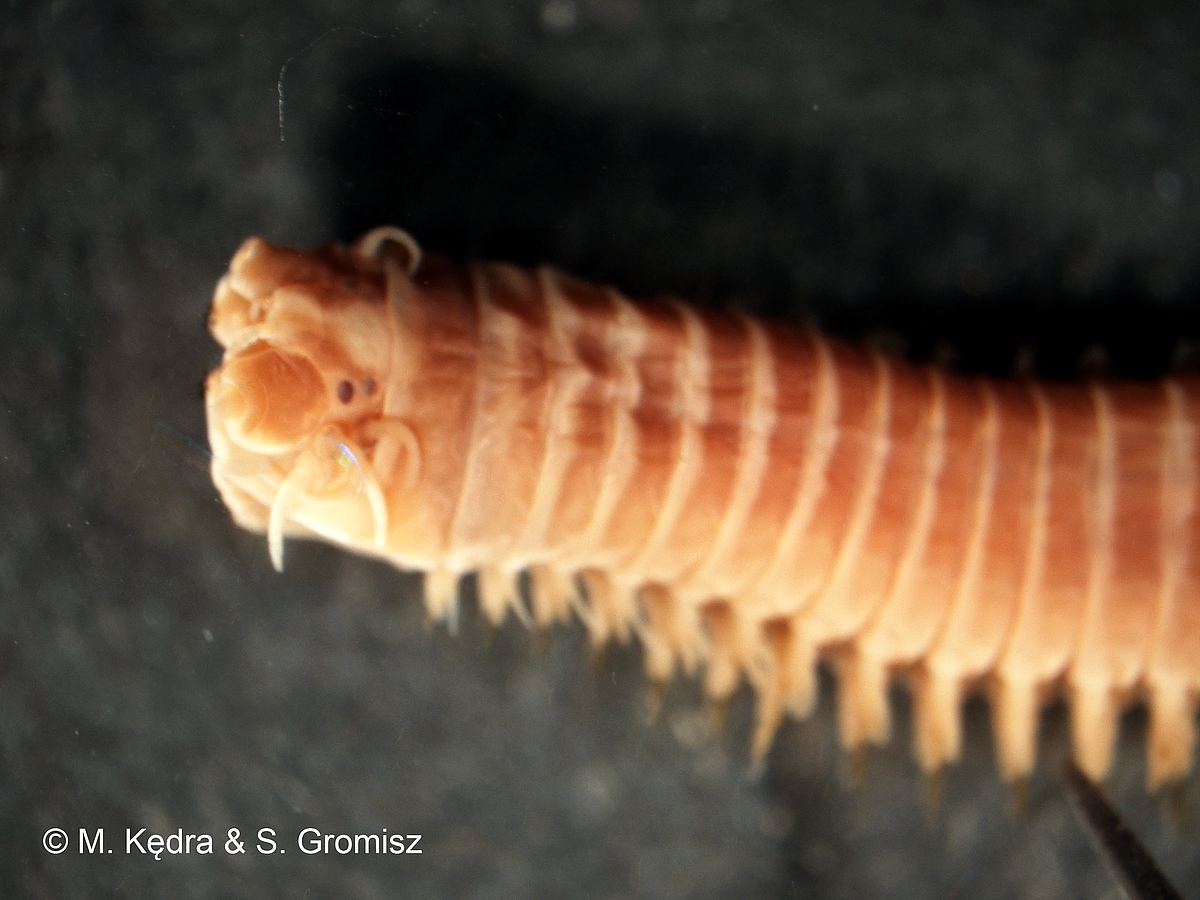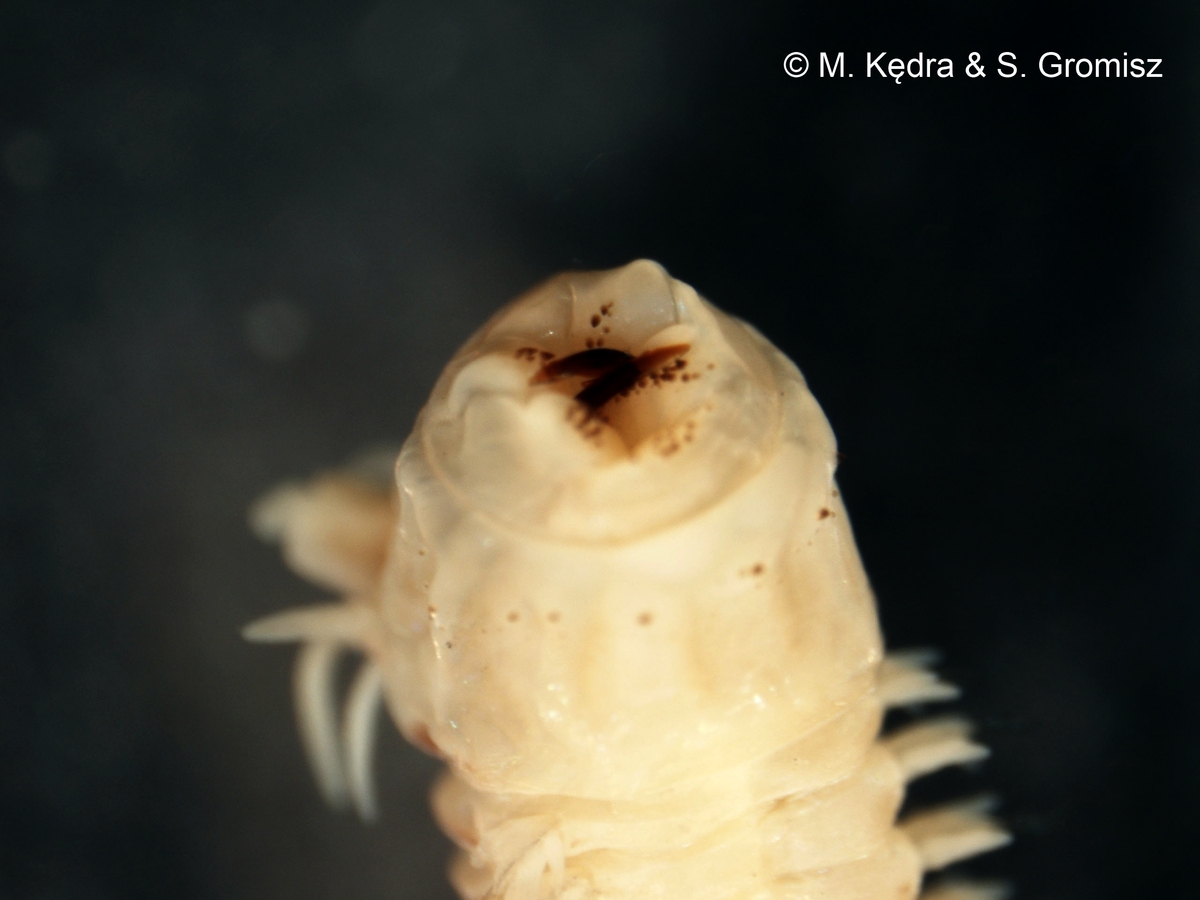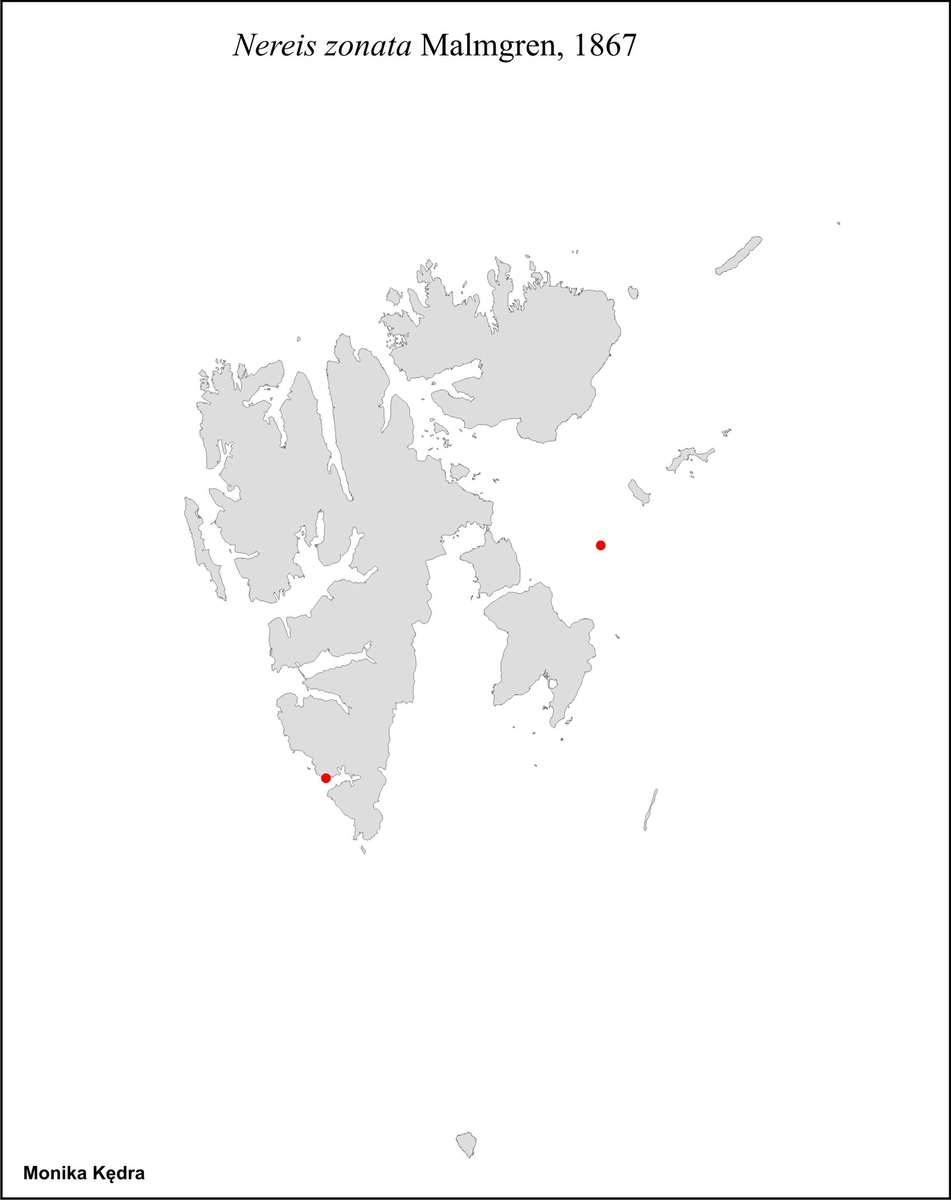Nereis zonata Malmgren, 1867

|

|

|
Heteronereis grandifolia Malmgren, 1865 part
Distinguishing characteristics
Head with long appendages, pharynx with 2 jaws, parapodia divided into 3 to 4 lobes.
Number and composition of paragnaths on pharynx.
Shape and size of parapodial lobes in anterior chaetigers.
Species description
Body narrow, tapering posteriorly. Prostomium with 2 short antennae, a pair of biarticulate palps of aproximately the same length as the antennae and 2 pairs of eyes in a trapezoid arrangement. Peristomium with 4 pairs of tentacular cirri, dorsal tentacular cirri longer than ventral ones, second dorsal cirrus reaching chaetiger 2. Pharynx with 2 jaws, oral and maxillary rings with conical paragnaths. VI group of paragnaths - 5-9 small in an irregular patch. Groups VII-VIII - a single, distinct row of large paragnaths plus irregular rows of smaller ones towards the mouth. Parapodia of the first 2 chaetigers uniramous with 3 lobes. Remaining parapodia biramous with 4 lobes. Dorsal notopodial lobe smaller than the notopodial acicular lobe, and ventral neuropodial lobe of similar shape to the notopodial lobes in anterior chaetigers, becoming slightly smaller and more bluntly to the posterior end. Dorsal cirri longer than parapodial lobes and ventral cirri slightly shorter.
Size
Up to 125 mm for 100 chaetigers.
Color
Pink, yellowish, reddish or violet.
Habitat
Found at low water in sand and under stones, a subtidal species.
Mobility
Mobile.
Feeding
Omnivore.
Life cycle
Distribution
Arctic, Iceland, Faroes, Norway, England, Denmark, Bering Sea, Japan.

